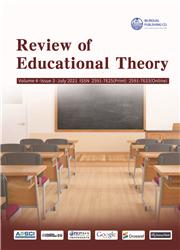Turn-taking in EFL Classroom Discourse
引用次数: 0
Abstract
In this essay, there will be a contrast and comparison between the teacherdominant turn-taking patterns and students-centered turn-taking patterns. This comparison can help us to find out which pattern can help develop an effective turn-taking in classroom discourse. In terms of the turn-taking pattern in EFL classroom, there also will be a study of turn-taking patterns. This study is concentrated on the EFL students who study in foreign language classroom. Different turn-taking patterns will be recorded to analyze students’ language performance and language anxiety during the turns change process. Brown (2008) proposes that senior foreign language learners tend to be influenced by the low sense of confidence, the feel of shame and inferiority. However, evidence shows that many students with higher level of language proficiency also are silent in the foreign language classroom. They seldom take turns to make a contribution to the speech in the classroom. This essay shows great interests in the relationship between EFL learners’ language anxiety and turn-taking patterns. Particularly, this essay will explore the several turn-taking patterns which can help to foster the flow of classroom talk. These turn-taking patterns will be analyzed in two directions: the teacher-fronted turns exchange and students-centered exchange. This can help EFL teachers to adjust the turn-taking patterns to the classroom teaching to help students get more involvements in the classroom conversation.英语课堂话语中的转折
本文将对以教师为主导的轮转模式和以学生为中心的轮转模式进行对比和比较。这种比较可以帮助我们找出哪种模式有助于在课堂话语中发展有效的转向。在英语课堂的轮转模式方面,也将对轮转模式进行研究。本研究以在外语课堂中学习的英语学生为研究对象。记录不同的轮换模式,分析学生在轮换过程中的语言表现和语言焦虑。Brown(2008)提出,高年级外语学习者容易受到自信心低、羞耻感和自卑感的影响。然而,有证据表明,许多语言水平较高的学生在外语课堂上也很沉默。他们很少在课堂上轮流发言。本文对英语学习者的语言焦虑与轮流模式之间的关系表现出浓厚的兴趣。特别地,本文将探讨几种有助于促进课堂会话流畅的轮转模式。这些轮转模式将从教师主导的轮转交换和以学生为中心的轮转交换两个方向进行分析。这可以帮助英语教师在课堂教学中调整轮转模式,帮助学生更多地参与课堂会话。
本文章由计算机程序翻译,如有差异,请以英文原文为准。
求助全文
约1分钟内获得全文
求助全文

 求助内容:
求助内容: 应助结果提醒方式:
应助结果提醒方式:


